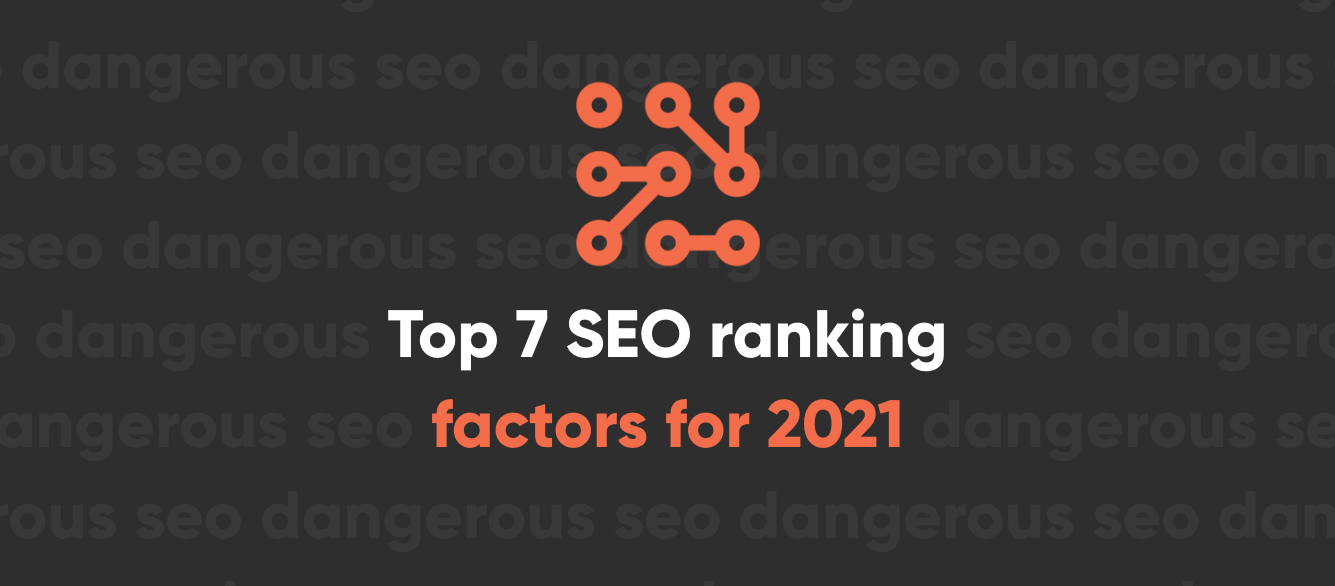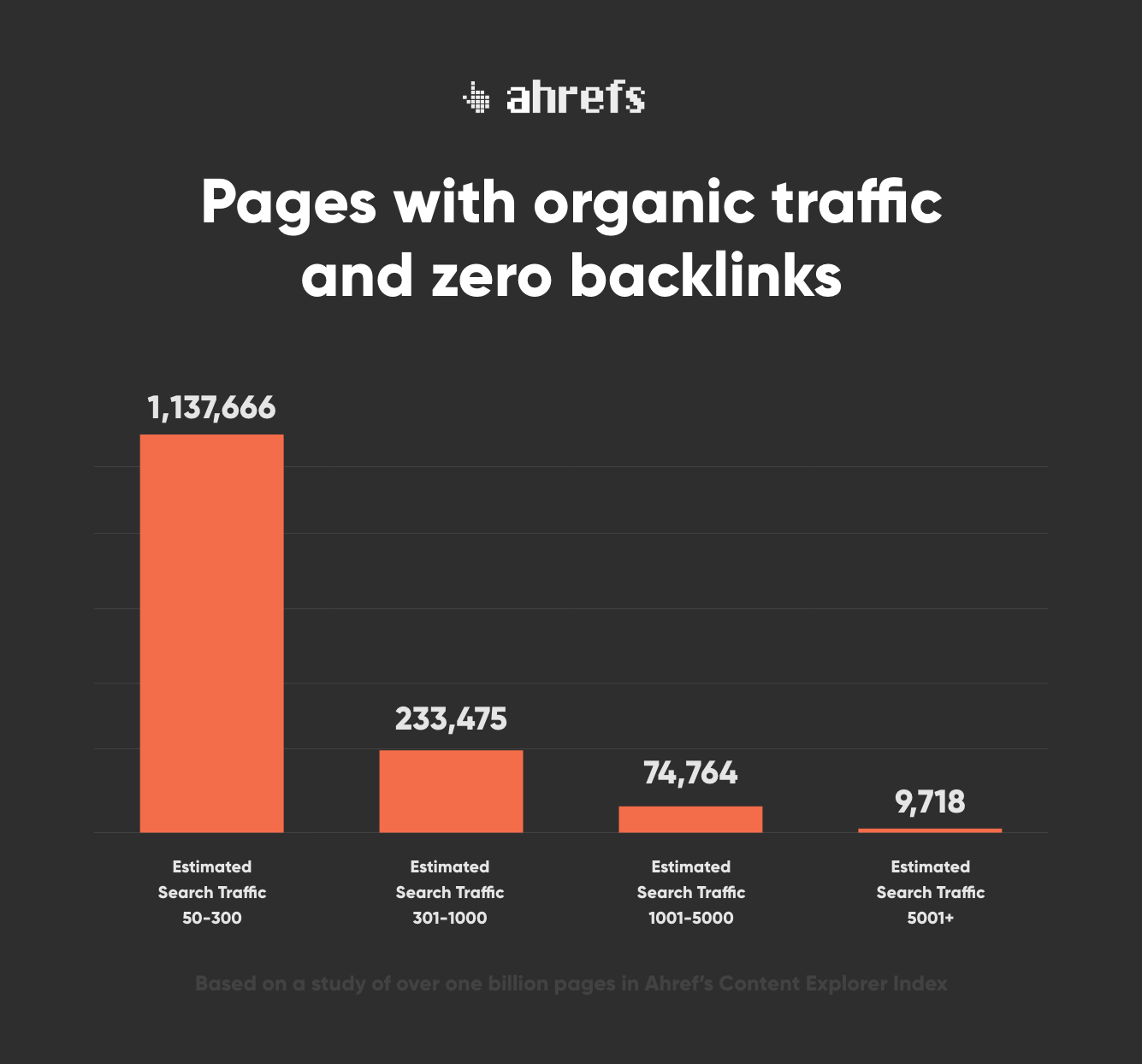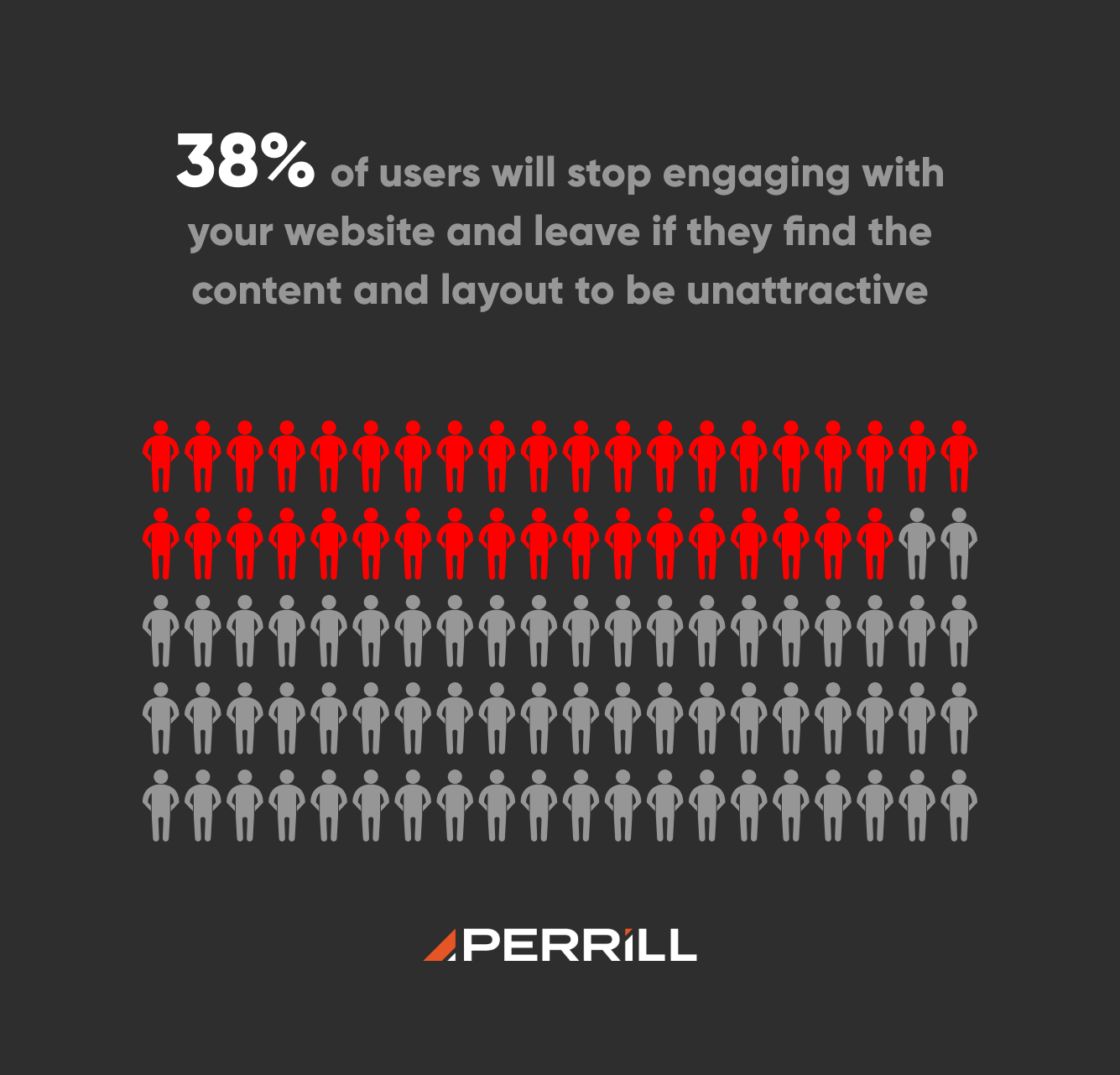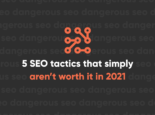
Top 7 SEO Ranking (and Non-Ranking) Factors for 2021

There are a lot of factors – more than 200 to be approximate – that help determine how Google will rank your webpages in search results.
These factors are changing all the time as Google updates its methodology and becomes more adept at bridging the gap between user intent and user experience. Later this year, Google will introduce the Core Web Vitals into the search algorithm, potentially wreaking havoc on the lives of SEO agencies everywhere.
Google must really know what it’s doing with these algorithm updates, because there are way too many times it feels like our search results know us better than we know ourselves. Like when you enter a two-word search query with 19 spelling errors and Google is still able to say, “I think you meant this.”

To be fair, I do have a friend from college named Cyrous Grorge, but it is not what I was intending to search in this instance.
As the internet evolves, search only becomes more competitive as content continues to grow and brands become more and more capable of shaping their strategies to keep up. With so many factors at play, trying to optimize based on all of them is an unrealistic objective. Instead, you should pick a handful to prioritize and make sure you hit them out of the park.
Here are 7 of the most important SEO ranking factors to make sure you prioritize in 2021.
1. High-Quality Content
I’m not going to say it, because at this point we all know content is an esteemed monarch that wears a crown and plays basketball for Sacramento’s NBA team. This much is obvious and even trite to say at this point, but that’s only because it’s true and is becoming truer with each passing day.
As Google has improved its algorithm year after year, the shift from keyword stuffing toward high-quality, user-focused content has become the resounding norm. Google now rewards websites for producing new, unique, and valuable content, and is smart enough to know what a page or website is really about – even if it doesn’t specifically use the phrase ‘what ever happened to that monkey that used to star in those taco john’s commercials’.
Google knows, and if you’re avoiding producing new content and opting to bolster your site with occasional keyword and image updates, you should buy a time machine and promptly exit the year 2010.
2. Backlinks
Backlinks are an important component of Google’s ranking algorithm, and they’re also a way the Google crawler finds your site for indexing.
Pages without any backlinks get significantly less traffic – not only because there are fewer pages linking to that page, but because Google looks at backlinking as a sign your site is credible.

Google essentially thinks, “If this many sites are linking to this other site, then this other site must really know its shit.” And most of the time, it’s right. If the sites linking to your site are also credible, then that’s even better. Think about it. If Steve Jobs, Walt Disney, and Albus Dumbledore all told you to read something, you might feel like checking it out. Google feels the same way.
Getting backlinks from high-profile and credible websites is an easy way to tell Google your site is right there with them.
3. Site Speed
Starting in June of 2021, Google is making website loading speed part of its Core Web Vitals, which is big news for your rankings. If your site takes even a tad bit longer to load than its counterparts (or than the benchmark Google sets), Google correlates this with a less-than-ideal user experience and could hurt you in its rankings as a result.
Site speed involves a number of different factors – such as responsiveness and how quickly fonts and images load – which means there’s a lot you can do to improve this metric. Taking steps like installing a WordPress caching plugin or using a content delivery network (CDN) may certainly be worthwhile for your business, but the most important thing to do is to regularly monitor the speed of your site and of individual pages. Odds are there’s a handful of issues ready for you to resolve.
4. Mobile-Friendliness
Google used to use the desktop version of your site for indexing and ranking, but since going mobile-first in 2019, it is now 1 billion percent necessary to make sure your website is mobile responsive.
The shift certainly makes sense and was likely overdue, as only deviants and my great aunt still use a desktop browser outside of work more than they use their mobile device. Ensuring your site is mobile-friendly not only has a massive impact on its rankings in search, but it also provides an infinitely better experience for your mobile users and also signals to the world that you indeed did find your way into and through that time machine from 2010.
Welcome to the here and now.
5. Keyword Strategy
I know I ragged on keyword stuffing and all that pretty hard a couple minutes ago, but that’s not to say keyword optimization strategies are entirely irrelevant in 2021. A smart keyword strategy certainly has its place in digital marketing, and while stuffing is no longer recommended, identifying high-priority keywords and intelligently implementing them within your content is still one of the easiest ways to tell Google what your site is about.
Knowing how to research and pick the right keywords based on volume, intent, and relevancy is still a valuable skill. Optimizing title tags, meta descriptions, alt text, and H1s also all have their place and should be leveraged to improve your rankings.
It’s also important to note that keywords don’t have to be exact-match for Google to pick up on them. This goes back to Google getting better and better at recognizing user intent. While being somewhat of a controversial issue in the SEO world today, it’s widely thought that related terms that people might search for (known as latent semantic indexing or LSI keywords) are highly useful and should be included within your content. Some believe LSI means you don’t actually have to mention the word on your page in order to rank for it. Hence the controversy. At any rate, I may not have come right out and said that content is king earlier (though I just did right there), but I knew both you and Google would be smart enough to figure out what I was saying.
6. Sitewide User Experience
Everyone always says they want their website to provide a great user experience, but not everyone realizes the colossal impact your site’s UX has on its performance in search results.
According to Adobe’s State of Content report, 38% of users will stop engaging with your website and leave if they find the content and layout to be unattractive. This is important for many reasons, but especially because of the effect of pogo-sticking. Basically, when a user visits your site from a Google search and then goes directly back to the SERP, it hurts your rankings. When users spend longer on your site, Google is more likely to give you an upward bump.

There are, of course, many factors that go into improving UX, such as site speed, content quality, website layout, and overall design. Taking time to get these things right and ensuring they’re all working together can make a big difference. Not only will your rankings improve, but it also bodes well for growing your audience and your revenue.
7. Structured Data
While not technically a ranking factor, structured data (also known as schema markup) can still have a strong impact on improving your rankings. Structured data is one of the more technical aspects of SEO, and while it may seem complex at first, it is fairly easy to learn and is especially valuable because Google uses it as another way of understanding what a page is about.
At a high level, structured data is microdata added to the backend of a webpage that provides Google with information about the page and how to classify its content, making it easier for search engines to crawl, organize, and display content.
Structured data labels the individual elements on a page so they’re more easily identified and interpreted by Google. Things like contact info or the step-by-step listing on a how-to page are great uses for structured data. Adding structured data to your site also improves its chances of appearing as a featured snippet, which can thereby increase click-through rates and rankings.
Start outranking the competition with the experts from Perrill
Since our conception as Minneapolis’s first digital agency in 1993, Perrill has grown into one of the most experienced and capable SEO experts in the Midwest. We use sustainable strategies, high-value keywords, and proven tactics to position you at the top of search results and make sure you say there.
Contact us today to learn more about becoming the brand you want to be online.

Dan Cole
Join Our Newsletter


Why Google Shouldn’t Reveal Its Search Algorithm


8 Signs You Need a Website Redesign


